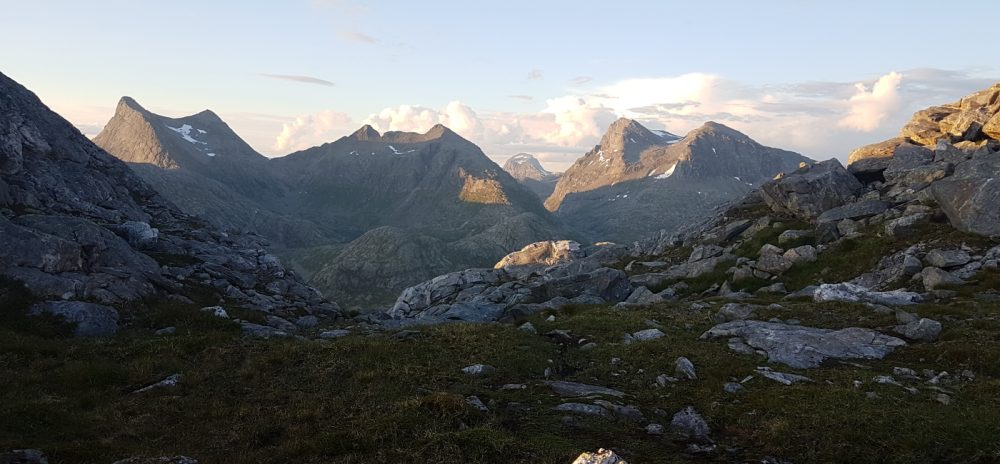Our week of Kayaking was a full beginner experience, this didn’t detract from it’s enjoyability however. The first half of the week was spent learning the skills in preparation for an island overnighter further afield. We were using the long, sleek sea kayaks which are designed for expeditions and cutting through waves.
The first day we paddled up and back down the river. Prior to this however we had a brief discussion with Evan on what we needed and how the hatch system of sea kayaks worked. We were asked what we should have in our ‘day hatch’. This included all the thing we would need for the day such as sun cream, sunglasses, an extra layer etc. We set off and this gave us the opportunity to look at the different strokes and their purposes. Forward paddling is fairly straight forward if the paddle is held correctly however sometimes correctional strokes are needed. This could simply be an additional pull however sometimes we can use a rudder. This is known as a stern rudder whereby the paddle is placed into the water behind the paddler. We also discussed the importance of trunk rotation in order to maximise body strength and efficiency so that the power isn’t simply coming from the arms. It is also important to have as much contact with the kayak as possible in order to improve our balance and prevent the kayak from veering. It is also generally understood that forward paddling has three key components ; catch, power and recover. For the catch the paddle is placed out in front of the paddler and the blade submerged. They then power the paddle through the water, using the aforementioned body structure or trunk rotation with many points of contact. Eventually, they can recover back to their original position and prepare for the next stroke on the other side of the kayak. We also looked at turning strokes. This included the sweep stroke, J-stroke and heavy-J. The sweep stroke is a wide stroke which turns the boat away from the side on which it is performed. It is usually performed in combination with a heavy- J. The J-stroke and heavy-J are variants of each other whereby the paddle (thumb down) is brought away from the rear of the kayak while moving in order to turn the boat toward the paddle. Draw strokes were another type of stroke used. This aims to propel the boat sideways without turning but drawing and pry the water to or from the boat, perpendicular to the bow/stern. Good technique involves raising one side such the water can be pushed easily underneath. We also looked at the low brace. This is used as the first measure to prevent capsizing in the event of feeling imbalanced. It involves bringing the paddle in contact or just above the kayak with the blades flat over the water. The key is that the elbows are over the paddle in order to improve the sturdiness of the structure. Once the paddle makes contact with the water it should be brought forwards rather than lifted in order to not pull the kayaker under.
We finished the day by performing a T-rescue. The water was very cold but having done this before I wasn’t too concerned. It involves using another kayak to drain the capsized kayak then re-enter it. It therefore requires good co-ordination and co-operation in order to prevent the capsized kayaker from getting too cold.
The following day with went on a tour around Odderøya. The fundamental lesson for the day was learning the high brace. It was also an opportunity to paddle on the open sea for the first time for many of those in the group. The high brace is the second line of defence against capsizing. The paddle is raised and strikes the water in order to push the kayaker back over once they are part submerged. We also looked at improving our low brace turns. We also each took turns at navigating legs on the water. It was an enjoyable day moving around Odderøya and seeing it from the water after climbing there.
The overnighter involved us leaving from Paradise Bay. This is a few Kilometres South-West of Kristiansand, along the coastline. Once we were on the water, we spent the day island hopping. And eventually came to a stop to have our lunch. The weather was beautiful making the navigating easy and the water was also very calm. Mid afternoon we cam to our bivvy destination. This was a small turfed area where we could relax and cook our dinner and sleep very comfortably. During the evening we headed to the top of a hull and as a group watched the sunset.
The next morning, we arose to more stunning weather. We hopped in our kayaks and chose a new route back. The structure of the day was almost identical and we were back by mid-afternoon. I really enjoyed this trip. As I have done sea kayaking before I didn’t find it challenging but it was very relaxing and a god way to spend a few days.
